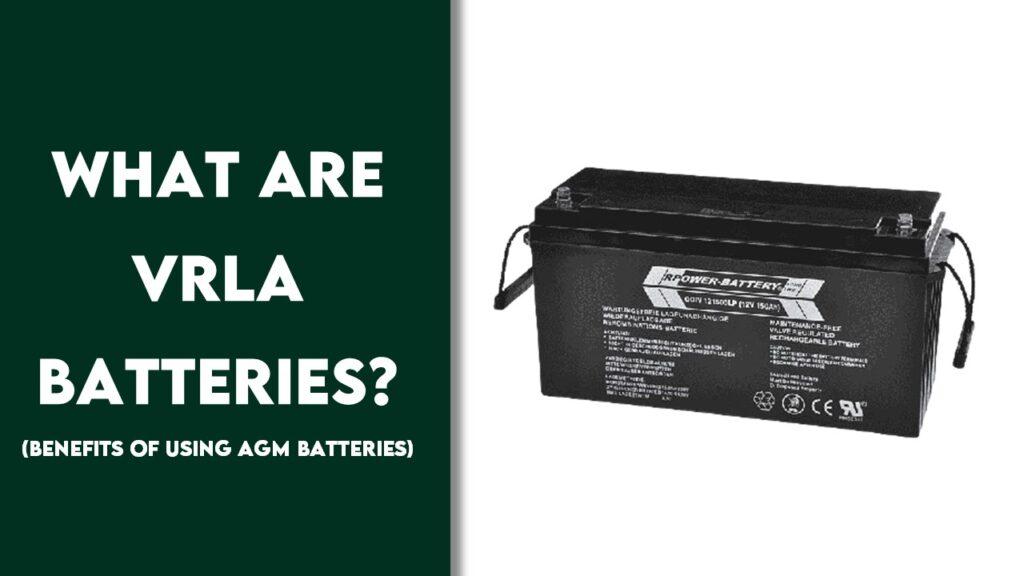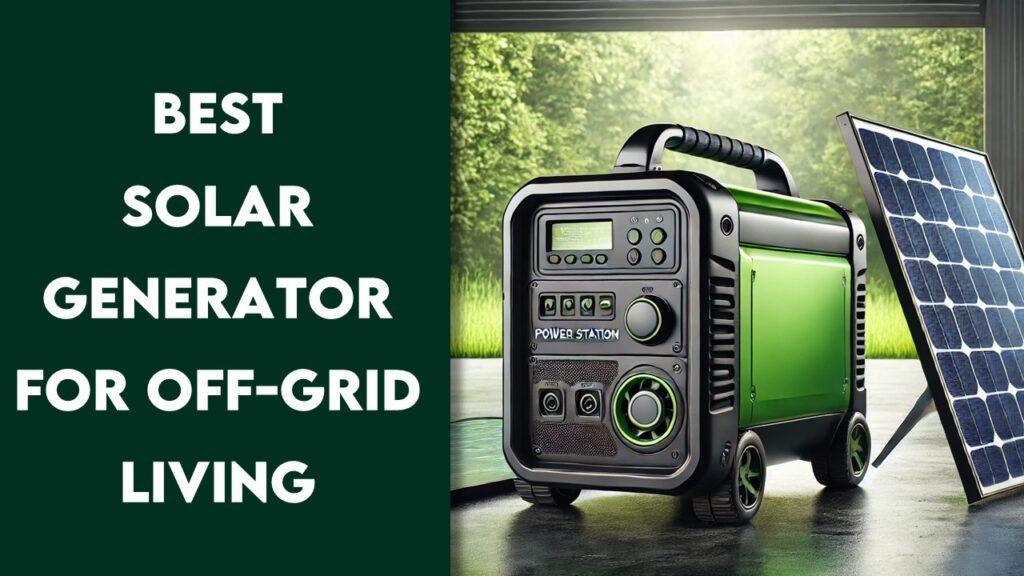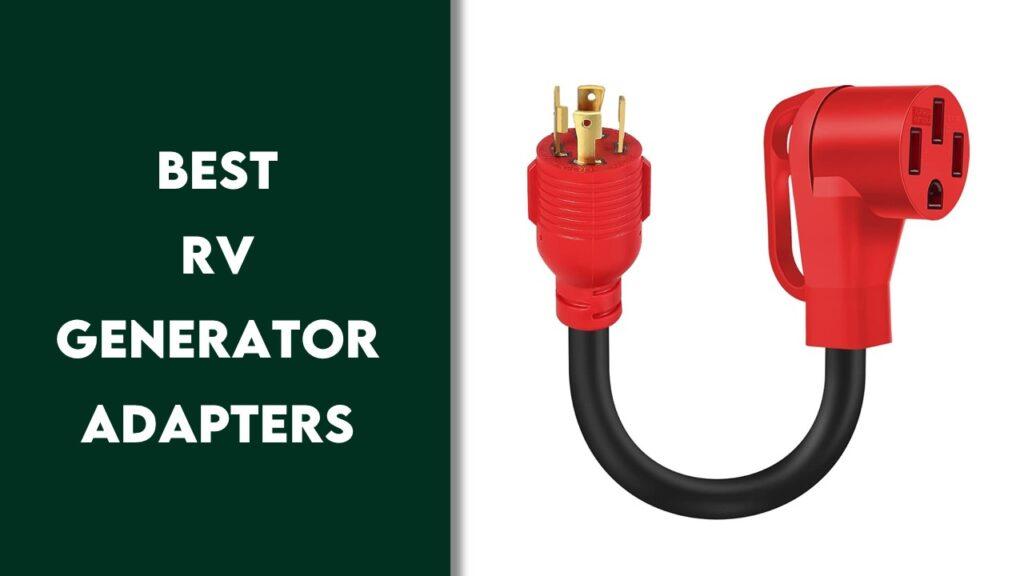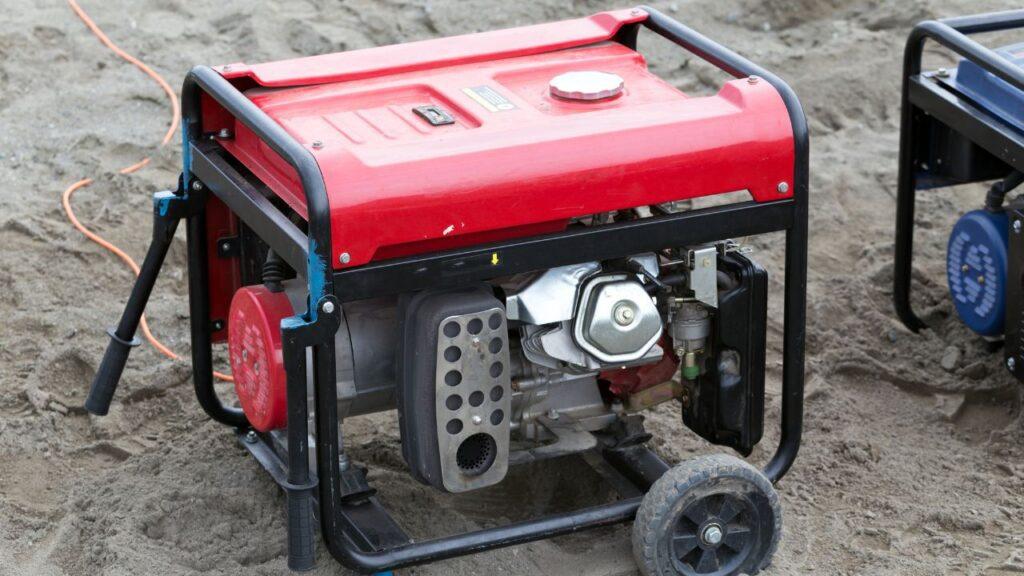
VRLA batteries, or valve-regulated lead-acid batteries, are sealed batteries that don’t need regular topping off with water. They’re built to prevent leaks and are often used in backup systems, solar setups, and vehicles. AGM batteries are a popular type of VRLA battery. They use absorbent glass mats to hold the acid in place, making them safer, more durable, and better at handling deep discharges.
This article will cover how VRLA and AGM batteries work, where they’re used, and why they’re a solid choice for reliable, low-maintenance power.
VRLA Batteries (What They Are)
VRLA batteries, or Valve-Regulated Lead-Acid batteries, are a specialized type of lead-acid battery. Unlike traditional flooded lead-acid batteries, VRLA batteries are sealed, meaning they don’t require regular maintenance like topping off water levels.
This makes them a popular choice for many applications where ease of use and safety are priorities. Inside a VRLA battery, the electrolyte, which is usually a liquid in regular batteries, is either absorbed into a glass mat (AGM) or turned into a gel.
This design prevents leaks and allows the battery to work in any position, which is especially handy in vehicles and equipment that experience a lot of movement.
VRLA batteries offer significant advantages over traditional flooded lead-acid batteries. Their sealed design and low-maintenance needs make them ideal for a wide range of applications. Whether you need reliable power for your vehicle, boat, or renewable energy system, VRLA batteries, especially AGM types, provide a dependable solution.
What is the Difference Between SLA, AGM, and VRLA?
When discussing battery types, it’s easy to get confused by the terms SLA, AGM, and VRLA. Let’s break it down in simple terms. SLA stands for Sealed Lead Acid, and VRLA (Valve-Regulated Lead Acid) is essentially the same thing. Both terms refer to batteries that are sealed and don’t require regular maintenance. However, AGM (Absorbent Glass Mat) is a type of VRLA battery.
Breaking Down the Differences:
- SLA vs. VRLA: SLA and VRLA are interchangeable terms. Both refer to batteries that are sealed, preventing leaks and reducing the need for maintenance.
- AGM (A Type of VRLA): AGM batteries are a specific type of VRLA battery. They use a fiberglass mat to hold the electrolyte, making them durable and resistant to vibrations. This makes AGM batteries perfect for vehicles and other applications where the battery might get jostled around.
Understanding the difference between these terms helps you choose the right battery for your needs. If you see SLA or VRLA, you’re dealing with a sealed, maintenance-free battery. If it’s AGM, you know it’s a type of VRLA battery designed for durability and long-lasting performance.
The key takeaway here is that SLA and VRLA are the same, while AGM is a specific type of VRLA battery. Knowing this difference allows you to make informed decisions when selecting a battery, ensuring it meets your specific needs.
How Do VRLA Batteries Work?
VRLA batteries work by containing their electrolyte in a way that prevents leaks and minimizes maintenance. Traditional lead-acid batteries have a liquid electrolyte that can spill if the battery is tipped or damaged. In contrast, VRLA batteries either absorb the electrolyte into a glass mat (AGM) or turn it into a gel. This sealed design ensures that even if the battery is punctured or placed in an awkward position, it won’t leak.
Key Components of VRLA Batteries:
- Electrolyte Containment: In AGM batteries, a fiberglass mat holds the electrolyte, while in Gel Cell batteries, the electrolyte is thickened into a gel. Both methods prevent spills.
- Valve Regulation: VRLA batteries have a valve that regulates internal pressure. This prevents the battery from swelling or bursting if gas builds up inside during charging.
- Oxygen Recombination: One of the standout features of VRLA batteries is their ability to recombine gases internally. During charging, gases produced inside the battery are recombined into water, reducing the need to add more electrolyte.
VRLA batteries are designed to be maintenance-free, but it’s essential to use the correct charger. Overcharging can cause the battery to fail prematurely. By understanding how these batteries work, you can take steps to ensure they last as long as possible.
VRLA batteries are a marvel of modern battery design. By containing their electrolyte and regulating internal pressure, they offer a reliable, maintenance-free power source for a wide range of applications. Understanding their internal workings helps ensure you get the best performance from your VRLA battery.
What Are VRLA Batteries Used For?
VRLA batteries are incredibly versatile and can be found in many everyday applications. Whether it’s powering your car, providing backup energy for your home, or keeping your boat’s systems running smoothly, VRLA batteries are up to the task. Their sealed design and low-maintenance nature make them ideal for situations where reliability is a must. Let’s dive into some of the most common uses of VRLA batteries and why they’re so popular across different industries.
Common Applications of VRLA Batteries:
- Automotive Use: Many modern vehicles, especially luxury cars, use AGM VRLA batteries. They provide reliable power for starting engines and supporting advanced electronics.
- Renewable Energy Systems: VRLA batteries, particularly deep-cycle types, are used in off-grid solar and wind power setups. They store energy for use when the sun isn’t shining or the wind isn’t blowing.
- Marine and RV Use: In boats and RVs, VRLA batteries are preferred because they’re spill-proof and can handle the bumps and tilts that come with travel. These batteries also work well alongside other RV and boat accessories like electric trailer dollies that rely on steady power for maneuvering heavy trailers with ease.
- Backup Power: Many homes and businesses use VRLA batteries in uninterruptible power supplies (UPS) to keep critical systems running during power outages.
These are just a few examples, but they highlight the adaptability and reliability of VRLA batteries. Their ability to work in various environments without needing much upkeep makes them a go-to choice for many.
VRLA batteries are used in a wide range of applications, from powering vehicles to supporting renewable energy systems. Their versatility and low-maintenance design make them invaluable in situations where dependable power is crucial. Understanding where and how these batteries are used can help you decide if they’re the right choice for your needs.
What is the Lifespan of AGM Batteries?
When considering a battery, one of the first things you want to know is how long it will last. AGM batteries, a type of VRLA battery, are known for their durability and long life, but like any battery, their lifespan depends on several factors. From how you use them to how well you maintain them, these factors can either extend or shorten the life of an AGM battery. Let’s explore what affects the lifespan of AGM batteries and how you can get the most out of them.
Factors Affecting AGM Battery Lifespan:
- Depth of Discharge (DoD): The deeper you discharge an AGM battery, the shorter its lifespan. Keeping the DoD between 20% and 50% can help prolong the battery’s life.
- Charging Practices: Using a charger designed for AGM batteries is crucial. Overcharging or undercharging can cause permanent damage and reduce the battery’s life.
- Temperature: AGM batteries perform best in moderate temperatures. Extreme heat or cold can cause the battery to degrade faster.
- Usage Frequency: The more frequently the battery is cycled (charged and discharged), the shorter its lifespan will be. Proper usage can lead to a lifespan of 3 to 5 years, and sometimes even up to 7 years with good care.
Taking care of these factors can significantly extend the life of your AGM battery, ensuring you get the best value for your investment. AGM batteries are built to last, but their lifespan is heavily influenced by how they are used and maintained. By understanding and controlling factors like depth of discharge, charging practices, and operating temperatures, you can maximize the lifespan of your AGM battery, making it a reliable power source for years to come.
What are the Benefits of an AGM Battery?
AGM batteries are a popular choice for many because of their unique benefits. Whether you need a reliable power source for your car, boat, or renewable energy system, AGM batteries deliver consistent performance. But what exactly makes them stand out? In this section, we’ll explore the key benefits of AGM batteries and why they’re favored over other types of batteries.
Key Benefits of AGM Batteries:
- Maintenance-Free: One of the biggest advantages of AGM batteries is that they are truly maintenance-free. Unlike traditional flooded lead-acid batteries, you don’t need to check water levels or worry about spills.
- Spill-Proof and Safe: AGM batteries are sealed, which means they won’t leak even if they’re tipped over. This makes them safer for use in vehicles, boats, and other situations where the battery might be jostled around.
- Longer Lifespan: AGM batteries generally last longer than traditional batteries when properly maintained. They are less prone to sulfation, a common issue that shortens the life of regular lead-acid batteries.
- Faster Charging: AGM batteries can be charged faster than flooded batteries. This means less downtime and more time using your equipment or vehicle.
- Versatility: AGM batteries are used in a wide range of applications, from powering vehicles and boats to providing backup power for homes and businesses.
These benefits make AGM batteries a top choice for those who need reliable, long-lasting power with minimal upkeep. AGM batteries offer numerous benefits, from being maintenance-free to having a longer lifespan. Their spill-proof design and fast charging capabilities make them ideal for various applications. Whether you’re looking for a battery for your vehicle, boat, or home, AGM batteries provide a dependable and hassle-free power solution.
Recommended Guide: How Long Does a Lithium Battery Last? (Tips To Prolong Battery Life).
What are the Advantages of VRLA Batteries?
VRLA batteries, including AGM and Gel Cell types, have several advantages over traditional lead-acid batteries. These benefits make them a preferred choice for many applications where safety, reliability, and ease of use are essential. In this section, we’ll cover the main advantages of VRLA batteries and explain why they are often chosen over other battery types.
Advantages of VRLA Batteries:
- Maintenance-Free Operation: VRLA batteries are sealed, which eliminates the need for regular maintenance like adding water. This feature is particularly valuable in environments where ease of use is crucial.
- Spill-Proof Design: Because the electrolyte is either absorbed in a mat (AGM) or turned into a gel (Gel Cell), VRLA batteries are spill-proof. This makes them safe for use in various orientations and in situations where leaks would be hazardous.
- Longer Shelf Life: VRLA batteries tend to have a longer shelf life than traditional lead-acid batteries. They discharge more slowly, which means they can sit unused for longer periods without losing their charge.
- Safe for Enclosed Spaces: VRLA batteries emit minimal gases, making them safer for use in enclosed spaces like boats, RVs, and telecommunications equipment.
- Versatile Applications: From automotive and marine to backup power and renewable energy, VRLA batteries are used in many fields due to their reliability and safety features.
These advantages highlight why VRLA batteries are trusted in critical applications where failure is not an option. The advantages of VRLA batteries, such as their maintenance-free operation, spill-proof design, and longer shelf life, make them a superior choice in many applications. Whether you need a battery for a car, boat, or backup power system, VRLA batteries offer a reliable and safe solution that stands the test of time.
What Are the Disadvantages of VRLA Batteries?
While VRLA batteries offer numerous benefits, they are not without their drawbacks. Understanding these disadvantages is important when deciding whether a VRLA battery is the right choice for your needs. In this section, we’ll explore the key limitations of VRLA batteries, focusing on areas where they may fall short compared to other types of batteries.
Key Disadvantages of VRLA Batteries:
- Higher Cost: One of the main drawbacks of VRLA batteries, particularly AGM types, is their higher price compared to traditional flooded lead-acid batteries. This cost can be a factor for those on a tight budget.
- Sensitivity to Overcharging: VRLA batteries are more sensitive to overcharging, which can lead to permanent damage. Using the wrong charger or overcharging them can significantly reduce their lifespan.
- Shorter Lifespan Compared to Flooded Batteries: While VRLA batteries are designed to be maintenance-free, they often have a shorter lifespan than well-maintained flooded lead-acid batteries. This is especially true if they are frequently subjected to deep discharges.
- Lower Energy Density: VRLA batteries typically have a lower energy density compared to other types of batteries like lithium-ion. This means they are heavier and bulkier, which can be a disadvantage in applications where space and weight are important considerations.
Understanding these limitations can help you make a more informed decision about whether VRLA batteries are the best choice for your specific needs.
While VRLA batteries provide many advantages, they also come with certain drawbacks, such as higher cost, sensitivity to overcharging, and shorter lifespan. By being aware of these disadvantages, you can better assess whether a VRLA battery suits your application or if another type of battery might be a better fit.
How to Maintain VRLA Batteries for Optimal Performance
Even though VRLA batteries are often marketed as “maintenance-free,” there are still some best practices you should follow to ensure they perform optimally and last as long as possible. Proper care can significantly extend the lifespan of your battery, providing better value and more reliable performance over time. In this section, we’ll cover practical tips on maintaining VRLA batteries to keep them in top condition.
Tips for Maintaining VRLA Batteries:
- Use the Correct Charger: Always use a charger that is specifically designed for VRLA batteries. This helps prevent overcharging, which can damage the battery and shorten its lifespan.
- Avoid Deep Discharges: Try to avoid discharging your VRLA battery below 50% of its capacity. Frequent deep discharges can reduce the overall life of the battery.
- Store in a Cool, Dry Place: High temperatures can accelerate the degradation of VRLA batteries. Store them in a cool, dry environment to maximize their lifespan.
- Regular Functional Testing: Even though VRLA batteries are low-maintenance, it’s still important to test them regularly to ensure they’re functioning properly. This can help catch issues before they lead to failure.
By following these simple maintenance tips, you can help your VRLA battery last longer and perform better, saving you money and ensuring you always have the power you need.
Proper maintenance is key to getting the most out of your VRLA battery. By using the correct charger, avoiding deep discharges, storing the battery in a cool place, and performing regular tests, you can extend its lifespan and enjoy reliable performance for years to come.
What Are the Common Sizes and Capacities of VRLA Batteries?
VRLA batteries come in a range of sizes and capacities to suit various applications. Whether you need a compact power source for portable devices or a large battery bank for solar power systems, there’s likely a VRLA battery that fits your needs. Understanding these options can help you choose the right size and capacity for your specific requirements.
Common Sizes and Capacities:
- Small VRLA Batteries: Often used in portable electronics, backup power for alarms, and emergency lighting systems. These typically range from 1Ah to 20Ah.
- Medium VRLA Batteries: Found in applications like motorcycles, ATVs, and small solar systems, with capacities between 20Ah and 100Ah.
- Large VRLA Batteries: Used for industrial backup systems, renewable energy storage, and large vehicles. These batteries can exceed 200Ah.
Choosing the Right Capacity:
- Deep Cycle AGM Batteries for Solar Power: Designed to handle repeated deep discharges, making them ideal for solar and renewable energy systems.
- AGM Batteries for Backup Power: Commonly used for uninterruptible power supplies (UPS) due to their reliability and sealed design.
VRLA batteries are available in a wide range of sizes and capacities, from small portable units to large deep-cycle models. Choosing the right size depends on your application, with AGM and gel batteries offering specific advantages depending on your needs.
How Do AGM Batteries Prevent Leakage?
AGM (Absorbent Glass Mat) batteries are known for being spill-proof and safe, even in demanding conditions. Their design ensures that the electrolyte is securely contained, preventing leaks even if the battery is tipped over or damaged. Let’s look at how AGM batteries achieve this.
Key Features of AGM Batteries:
- Absorbent Glass Mat Technology: The electrolyte is absorbed into a fiberglass mat, preventing it from sloshing around like in traditional flooded batteries. This is what makes AGM batteries maintenance-free.
- Sealed Design: AGM batteries are a type of sealed lead-acid battery, meaning there’s no need to top off the electrolyte or worry about spills.
- Pressure Regulation: Built-in safety valves allow gas to escape only when pressure builds up excessively, ensuring the battery remains safe and secure.
AGM vs Gel Batteries:
While both AGM and gel batteries are leak-proof, AGM batteries are more resistant to vibrations and have better performance in colder temperatures, making them ideal for automotive and backup power applications.
AGM batteries prevent leakage through their innovative design, which combines absorbent glass mats and a sealed structure. These features make them safe and reliable for a wide range of uses, from cars to solar systems.
Are VRLA Batteries Safe for Indoor Use?
Safety is a critical factor when using batteries indoors, and VRLA batteries are designed with features that make them an excellent choice for such applications. Their sealed design and minimal gas emissions set them apart from traditional flooded lead-acid batteries.
Why VRLA Batteries Are Safe Indoors:
- Sealed Construction: Unlike flooded batteries, VRLA batteries are completely sealed, preventing any spills or leaks.
- Minimal Gas Emissions: During normal operation, VRLA batteries emit little to no hydrogen gas, making them safe for enclosed spaces.
- Built-In Safety Features: Pressure relief valves ensure that excess gas is safely vented without compromising the battery’s integrity.
Best Indoor Applications:
- Backup Power Systems: Used in UPS units to provide uninterrupted power during outages.
- Medical Equipment: Ideal for powering sensitive devices due to their safety and reliability.
- Telecommunications: Commonly used in equipment huts and cabinets, where ventilation is limited.
VRLA batteries are among the safest options for indoor use. Their sealed design, minimal emissions, and safety features make them perfect for applications where reliability and safety are essential.
Do AGM Batteries Require Any Special Charging Techniques?
AGM batteries are easy to maintain, but charging them correctly is essential to maximize their lifespan and performance. Unlike standard lead-acid batteries, AGM batteries have specific charging requirements to prevent overcharging and extend their useful life.
Special Charging Techniques for AGM Batteries:
- Use a Compatible Charger: Always use a charger designed for sealed lead-acid batteries. These chargers regulate voltage and current to match the battery’s needs.
- Avoid Overcharging: Overcharging can cause excessive heat and shorten the battery’s life. Smart chargers with automatic shut-off features are recommended.
- Temperature Compensation: AGM batteries can be sensitive to temperature. Some chargers adjust voltage based on the surrounding temperature to prevent damage.
- Regular Equalization (When Recommended): Certain AGM batteries may benefit from periodic equalization to balance the cells. Check the manufacturer’s guidelines before attempting this.
AGM vs Standard Lead-Acid Battery Charging:
While flooded batteries can tolerate occasional overcharging, AGM batteries require more precise control. This is why using a specialized charger is so important for AGM batteries.
Charging AGM batteries correctly is key to ensuring their long life and reliable performance. By using a compatible charger and following best practices, you can prevent damage and get the most out of your AGM battery. Along with batteries you can check out our guide on whole house generators for emergency power outage and versatile usage as well.
Wrapping It Up!
VRLA batteries, including AGM and Gel Cell types, offer a reliable, maintenance-free power solution for a wide range of applications. Their sealed design, spill-proof nature, and versatility make them a top choice for automotive, marine, and backup power systems. However, it’s essential to consider their limitations, such as higher cost and sensitivity to overcharging, when deciding if they’re the right fit for your needs.
While VRLA batteries come with some drawbacks, proper care and maintenance can mitigate these issues and extend their lifespan. Using the correct charger, avoiding deep discharges, and storing them in suitable conditions are crucial steps in ensuring optimal performance. By understanding both the benefits and limitations, you can make an informed decision and get the most value out of your investment.
In summary, VRLA batteries are an excellent choice for those seeking a dependable and low-maintenance power source. With the right approach, these batteries can provide long-lasting, reliable energy for various uses, making them a smart option for many users.
Related FAQs
What Makes VRLA Batteries Safer Than Traditional Batteries?
VRLA batteries are spill-proof and emit minimal gases, making them safer for various applications.
How Do I Properly Charge A VRLA Battery?
Use a charger designed for VRLA batteries to avoid overcharging and extend battery life.
Can VRLA Batteries Be Used In Extreme Temperatures?
VRLA batteries perform best in moderate temperatures and may degrade faster in extreme conditions.
What Are The Most Common Uses For Gel Cell VRLA Batteries?
Gel Cell VRLA batteries are commonly used in wheelchairs, RVs, and trolling motors.
How Do VRLA Batteries Prevent Overpressure?
VRLA batteries have a valve that regulates internal pressure, preventing damage from overpressure.

Matt Riggins has spent years working with generators, solar panels, transfer switches, batteries, fuel setups, and circuit wiring. He’s the guy friends and neighbors call when the power goes out or something just won’t run right. From off-grid installs to fixing up old or new portable units, he’s been through it all. Alan doesn’t just talk theory, he’s out there solving real problems and helping people keep their systems running when it matters most.




